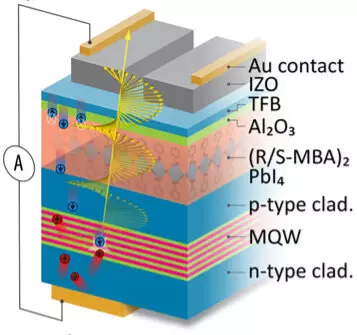In the landscape of modern technology, traditional electronics have primarily relied on semiconductors, which utilize charged carriers—electrons and holes—to transmit data in binary form; that is, as 1s and 0s. This method has served humanity well for decades, laying the foundation for everything from our simplest gadgets to complex supercomputers. However, this binary method inherently limits the amount of information that can be processed simultaneously. The defining characteristics of these charged carriers, namely the flow of electrical current, guide their roles in typical electronic devices. Despite their successes, there is an imminent need to move beyond these constraints to harness greater efficiencies and capabilities.
The Promise of Spintronics
Enter the revolutionary field of spintronics, a technology that promises to escalate the transmission of data by utilizing an intrinsic property of electrons known as spin. Rather than simply relying on the presence or absence of charge, spintronics assigns binary values to the orientation of electron spins—’up’ being 1 and ‘down’ being 0. This approach, in theory, can exponentially increase data processing capabilities because it allows for a greater wealth of information to be encoded. But every light has its shadow; spintronics faces significant obstacles, particularly in the consistent manipulation of spin orientations, which has prevented its broader commercial application.
The Challenge of Electron Spin Manipulation
A substantial challenge in the development of spintronic devices is the necessity of ferromagnets and magnetic fields to control spin orientation. This requirement has proven to be both cumbersome and unreliable. Decades of investigative efforts have unveiled a perplexing reality: as carriers transition between materials with differing conductive properties—such as from metallic ferromagnets to typically low-conductivity substrates like silicon—they lose their well-defined spin orientation. Consequently, effectively injecting spin-aligned electrons into typical semiconductors has been a significant hurdle. Any breakthrough in this domain could not only advance spintronics but also redefine the operational capabilities of electronic devices altogether.
A Groundbreaking Discovery
Remarkably, researchers from the University of Utah and the National Renewable Energy Laboratory (NREL) have emerged with a groundbreaking solution to overcome these long-standing challenges. By ingeniously transforming off-the-shelf optoelectronic devices, specifically standard Light Emitting Diodes (LEDs), into functional spintronic devices without the need for ferromagnets or magnetic fields, they have opened new frontiers for this promising technology. Utilizing a patented spin filter made from hybrid organic-inorganic halide perovskites, these scientists successfully enabled the control of electron spins at room temperature, a feat previously considered unattainable.
What makes this innovation particularly astounding is the simplicity of its implementation. By merely replacing one electrode of a conventional LED with the specially designed spin filter, the device began to emit circularly polarized light—a clear indicator that spin-aligned electrons were being injected into the semiconductor infrastructure. According to Valy Vardeny, a notable physicist involved in the study, this discovery heralds a new era for devices that leverage both spin and optoelectronics.
The Science Behind the Breakthrough
The science underpinning these spin filters relies heavily on chirality, which describes a unique arrangement of molecules where the mirror image cannot be superimposed onto itself—much like human hands. In this case, the filter employs a “left-handed” chiral layer designed to selectively allow electrons with ‘up’ spins to pass while obstructing those with ‘down’ spins, thus facilitating a precise manipulation of spin orientation. In previous work, this team had laid the groundwork for such a technology, and their recent success in modifying standard LEDs represents a significant culmination of their efforts.
The engineering behind the new spin LEDs involves stacking multiple layers, each crafted with specific functions. The resultant design enables electrons to recombine and produce light in a novel spiral path, as opposed to the conventional wave pattern, consequently generating distinct circularly polarized electroluminescence. This remarkable achievement exemplifies the potential of hybrid semiconductor systems to exploit their differing properties, combining organic and inorganic materials to craft superior spintronic devices.
Looking Ahead: The Future of Spintronic Technology
Despite this remarkable achievement, researchers acknowledge the need for further exploration to fully grasp the underlying mechanisms at play in generating polarized spins. The possibilities of applying these strategies to other chiral materials, such as DNA, could yield expansive avenues of exploration, making it an exciting time for scientists and engineers alike. The sheer transformative potential of spintronics could redefine the conventions governing electronic design and manufacturing.
As the world pivots toward increasingly complex technological needs, embracing innovations like spintronics signifies a shift towards a more advanced and efficient future for electronics. The implications of these discoveries are vast—spanning beyond mere enhancements in efficiency—potentially ushering in a new era of technological ingenuity that could reshape our devices and, indeed, our lives.

